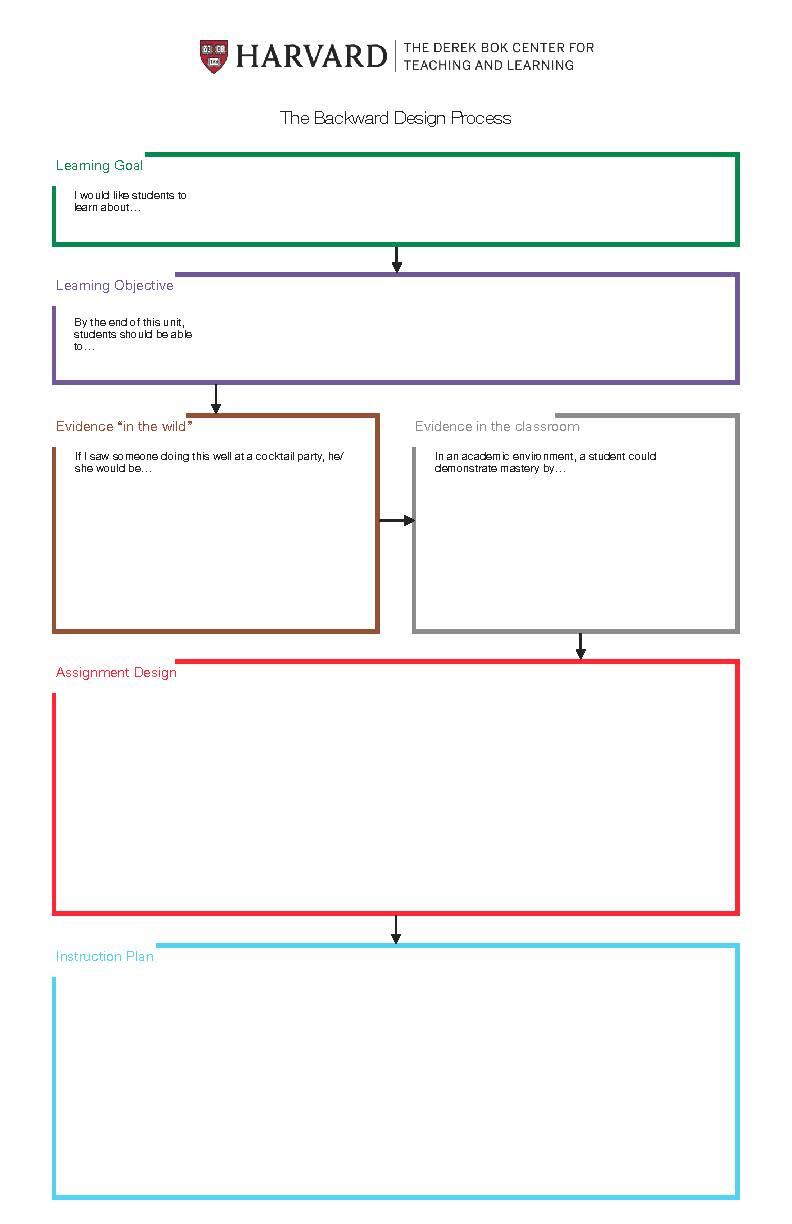When we ask ourselves what our students should learn in our course, or what they should be able to do by time it ends, our answers reflect our learning objectives for the course. These might go something like, "Students should be able to compare the causes of the Civil War in terms of their relative importance," or "Given a chemical modification to a nucleotide in a base pair, explain how it can lead to a mutation if left uncorrected." With these sorts of a skills-based objectives in place, though, backward design prompts us further to consider the conditions under which students are most likely to meet these goals: How will students demonstrate their learning? How will we know that they know?
These questions are where assessment design becomes important. In order for students to demonstrate whether they've accomplished the objective we set, the paper they write or the exam they take has to evaluate that objective specifically. Both the form and content of the assessment can facilitate (or hinder) that evaluation. Asking students to provide dates of battles, names of generals, and pre-war compromises assesses recall of facts, but not analysis or argumentation. Similarly, a multiple choice format that asks students to pick the most important cause of the war out of a set of four fails to provide the opportunity for in-depth comparison. Our first sample objective from above, for example, is probably best assessed through an essay format, one that asks students to compare more and less important causes of the Civil War.
Once we've designed an assessment, our final task—which brings us around to the "front" of Backward Design—is to plan our teaching, which should enable students to complete the assessment successfully, thereby demonstrating their learning. Lecturing, primary and secondary readings, student presentations, and debates are all possible ways of structuring student learning towards the eventual assessment. And because we've designed our assessment based on a worthwhile objective, it now becomes appropriate—and not perfunctory—to "teach to the test." After all, we want students to meet (or exceed) the challenge we set for them, especially when their accomplishment is proof that they have learned exactly what we intended them to learn and learn to do from the very beginning—there's nothing "backward" about that.

